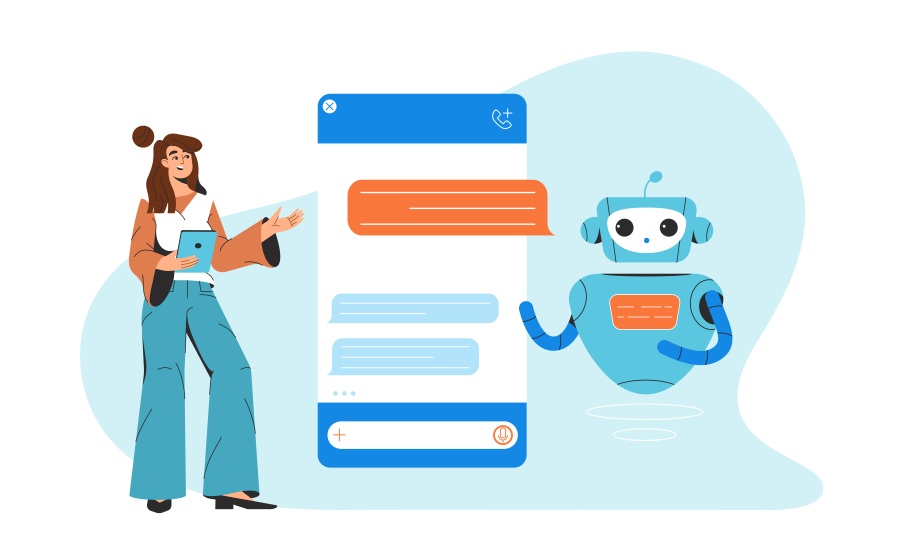Best Practices for Website Accessibility and SEO
In today’s web development landscape, building websites that are not only functional but also accessible and SEO-friendly is crucial. As a web developer at FreelancerBridge, you must focus on ensuring that your websites cater to all users, including those with disabilities, while also adhering to best SEO practices to achieve better search engine rankings.
Website accessibility and SEO are closely linked, as many of the techniques used to make a site accessible are also beneficial for search engine optimization. This article will explore the best practices for both website accessibility and SEO, providing you with actionable steps to enhance your website's user experience and search engine performance.
Long Description
Why Website Accessibility is Important
Website accessibility refers to designing and developing websites that are usable by people with various disabilities. This can include individuals with visual, auditory, physical, or cognitive impairments. Accessible websites ensure that everyone, regardless of ability, can navigate and interact with the content effectively.
In addition to ethical and legal reasons (such as compliance with the Americans with Disabilities Act (ADA)), making your website accessible also contributes to a better user experience. When people with disabilities can access your content, it increases their engagement, which in turn reduces bounce rates and improves conversion rates.
The Link Between Accessibility and SEO
Many SEO best practices overlap with website accessibility principles. For example:
Alt text for images: This is crucial for accessibility, as it allows screen readers to describe images for visually impaired users. From an SEO perspective, alt text also helps search engines understand what an image is about, improving the chances of appearing in image search results.
Semantic HTML: Proper use of headings (H1, H2, H3, etc.), lists, and other semantic HTML elements helps not only make the website more accessible but also improves its structure for search engines, making it easier to index and rank content.
Fast loading times: Websites that load faster are more accessible to users with disabilities (especially those relying on assistive technology) and also provide a better SEO experience.
By following best practices for both SEO and accessibility, web developers can create websites that are inclusive, user-friendly, and optimized for search engines.
Best Practices for Website Accessibility and SEO
1. Use Proper HTML Markup and Structure
Properly structured HTML is essential for both SEO and accessibility. For example:
Headings: Use headings (H1, H2, H3, etc.) to organize your content logically. This not only helps search engines understand your content hierarchy but also aids users with screen readers in navigating the site efficiently.
Lists: When creating lists, use proper list elements like <ul>, <ol>, and <li> for better readability and navigation for both screen readers and search engines.
Semantic Elements: Use HTML5 semantic elements like <article>, <section>, <nav>, and <footer> to make your site more accessible and SEO-friendly. These elements help search engines understand your content better and improve accessibility for users relying on assistive technologies.
2. Provide Text Alternatives for Non-Text Content
Images, videos, and other non-text content should include alternative text (alt text) descriptions for accessibility. Alt text ensures that visually impaired users can understand what the image represents via screen readers. For SEO purposes, alt text helps search engines index images, improving the chances of ranking in image search results.
Images: Ensure all images have descriptive alt text that accurately reflects their content and context.
Videos: Provide captions, transcripts, or audio descriptions for videos. This enhances accessibility and helps search engines crawl and index video content.
3. Optimize for Mobile and Responsive Design
Mobile-friendliness is a crucial factor for both accessibility and SEO. As Google uses mobile-first indexing, ensuring that your website is responsive and performs well on mobile devices is key for ranking high in search results.
Responsive Design: Use CSS media queries to make sure your website adjusts to different screen sizes and orientations. This not only improves accessibility for mobile users but also boosts SEO rankings.
Mobile-Friendly Testing: Use tools like Google’s Mobile-Friendly Test to check how your website performs on mobile devices. A responsive design improves accessibility and ensures a seamless experience for all users.
4. Improve Website Navigation for All Users
Clear and easy-to-navigate websites are essential for both user accessibility and SEO. This includes:
Keyboard Navigation: Ensure that all interactive elements (like forms and buttons) are navigable via the keyboard. This benefits users with mobility impairments who may rely on keyboard navigation instead of a mouse.
Clear Menus: Use easy-to-understand navigation menus with proper heading structure and logical organization. This not only helps users but also helps search engines crawl your website more effectively.
5. Enhance Website Speed and Performance
Website loading speed plays a major role in both accessibility and SEO:
SEO: Faster websites tend to rank higher in search engine results because they provide a better user experience. Page speed is a key ranking factor for Google.
Accessibility: Slow-loading websites can frustrate all users, including those with disabilities who rely on assistive technologies. Optimize images, use caching, and minimize JavaScript to improve loading times.
6. Ensure Proper Color Contrast and Font Readability
For accessibility, your website should have a high color contrast between text and background to ensure readability for users with visual impairments. Use tools like the WebAIM Contrast Checker to evaluate your website’s color contrast.
SEO Impact: Readable and accessible content is more likely to be consumed and shared by users, increasing engagement metrics that can positively affect SEO.
7. Implement ARIA (Accessible Rich Internet Applications)
ARIA is a set of attributes that improve accessibility for dynamic content and advanced user interface controls. Using ARIA correctly ensures that users with disabilities can interact with complex elements like sliders, forms, and live content updates.
SEO Impact: While ARIA primarily enhances accessibility, improving user interaction and engagement with your content can indirectly benefit your SEO.
Tools for Testing Website Accessibility and SEO
Several tools can help you assess the accessibility and SEO of your website:
Google Lighthouse: A powerful tool for evaluating the performance, accessibility, and SEO of your website.
WAVE (Web Accessibility Evaluation Tool): A browser extension that helps you evaluate accessibility issues on your website.
Ahrefs: An SEO tool to monitor your website’s search engine performance and provide suggestions for improvement.
Screen Readers: Test your website’s accessibility by using screen readers such as NVDA or JAWS.
By incorporating these tools and practices, you can ensure that your website is both accessible and optimized for SEO, improving its visibility and user experience.
Conclusion
Website accessibility and SEO should go hand-in-hand in today’s web development world. By following the best practices outlined in this article, web developers can create websites that are not only inclusive and accessible to all users but also optimized for search engine rankings. Accessibility improves engagement, reduces bounce rates, and enhances user satisfaction, while SEO ensures your content reaches a wider audience.
At FreelancerBridge, we understand the importance of building websites that cater to both accessibility and SEO, ensuring that every user has a seamless experience while also boosting your website’s performance on search engines.


 by Emily
by Emily




